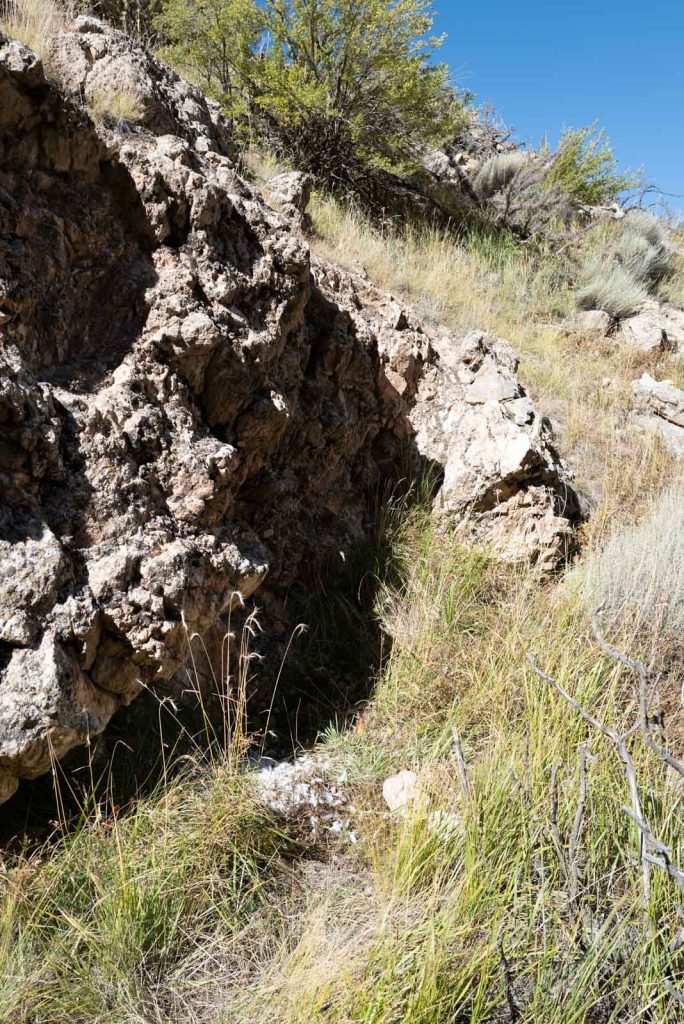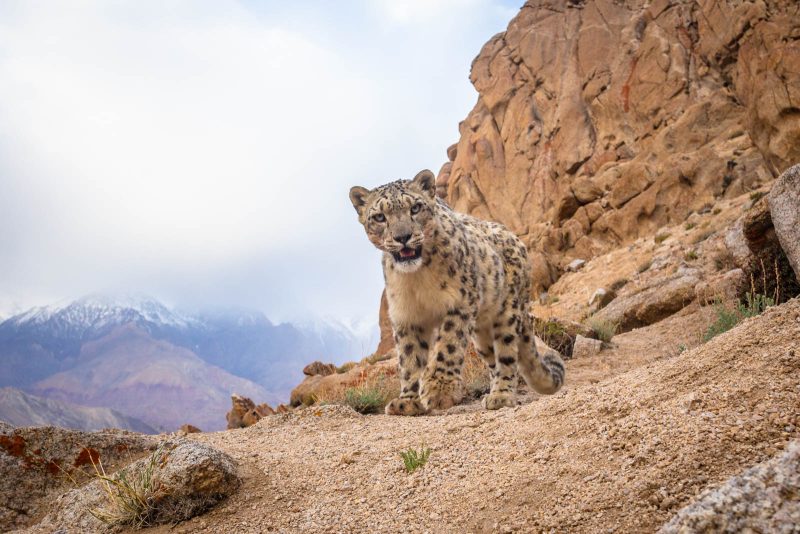Snow Leopard Photography: How and Where to Photograph Snow Leopards

Snow leopard photography is a magical experience.
These wise-looking, mysterious wild cats have always captivated my imagination. In the regions where they are found, snow leopards are considered mythical creatures in folklore and fairy tales.



In the physical world, the snow leopard’s incredible stealth makes it the most difficult big cat to ever photograph in the wild.
While many dream of catching a glimpse of these legendary ghosts of the mountains, I’ve been fortunate enough to photograph them on several occasions.

In this guide, I’m sharing insights from my own experiences with snow leopard photography, which will hopefully help you to get your own images of this incredible and elusive species!
Snow leopard photography
Snow leopards undoubtedly need protection. The species Panthera uncia is classified as vulnerable on the IUCN Red List, with an estimated 7000 individuals remaining in the wild.
Despite their remarkable adaptation to the harsh mountainous environment they inhabit, their population is on the decline.
As human settlements continue to expand, the encroachment of livestock farming on snow leopard territory, and the ensuing loss of livestock, has resulted in a rise in retaliatory killings and poaching.

I strongly believe that photography can play a significant role in wildlife conservation, driving both awareness and action. A single powerful image can speak volumes.
By documenting the sheer existence, beauty, behavior, or challenges of an animal, a photo can connect with the viewer, fostering empathy and a sense of responsibility towards the species’ protection.
Thus, photographs are a crucial tool in conservation fundraising.
I’m proud that, through my camera trapping photography work, I’m able to support nonprofit organizations such as the WWF UK and the Snow Leopard Trust in their snow leopard awareness and education activities.
Read more: Conservation Photography – How to Work With Biologists
Snow leopard range and lifestyle
Snow leopards are not an easy subject to locate. They inhabit the remote mountainous regions of Central Asia at elevations between 3000 and 5000m.
Their territory stretches across twelve countries along the Himalayan range: Russia, Mongolia, Kazakhstan, Kyrgyzstan, Afghanistan, Tajikistan, Uzbekistan, Pakistan, India, Nepal, and Bhutan. However, the largest population resides in western China.

Snow leopards are highly adapted. They thrive in rocky terrains, cliffs, and steep slopes. Their large chest helps them breathe at high altitudes, their large fur-covered paws act as natural snowshoes, and their tails (which are the longest relative to body size among all cats) help them balance.
Snow leopards are solitary, usually only seen together during the breeding season. Their solitary nature is a response to the sparse distribution of their prey in the dry mountains, which primarily consists of blue sheep, ibex, rodents and game birds.
Read more: Photographing a Species In-depth
Where and when to see snow leopards for photography
If you’re looking to capture images of snow leopards, knowing the best locations is crucial. Photo tours offer one of the best chances to observe a snow leopard in the wild, either through binoculars or a long lens.

Some popular places include Ladakh in northern India, where Hemis National Park is a notable spot, or Spiti Valley in India’s state of Himachal Pradesh.
Specialized operators also offer snow leopard trekking in the Altai Mountains in Mongolia and Russia. Besides these well-known spots, always be on the lookout for emerging opportunities in lesser-known locations.

Collaborating with local people is key. Whenever possible I work with field biologists, park rangers and experienced spotters. Their expertise is indispensable in navigating the vast and often hostile terrain, without which a visiting photographer would be completely lost.

My favorite time to photograph snow leopards is during the winter months, typically between November and March. This offers opportunities for incredible scenes of majestic snow leopards against a backdrop of pure white snow!
Spotting them, however, is an unpredictable venture and there is never any guarantee for a photo.

It can take anywhere from days or weeks to months, and some people never see one. A snow leopard expedition typically involves a combination of trekking, scouting, and waiting at vantage points.
The guides often track prey species, as snow leopards tend to be in areas where their food sources are.

Top Tip: It’s important to bring adequate clothing for extended periods in the cold. Expect demanding treks across Mars-like terrains with low-oxygen levels.
Read more: How to Use Cameras in Extremely Cold Temperatures
Tips for finding snow leopards
Snow leopards are extremely elusive and hard to see. Teaming up with local experts is essential for locating them in the wild. They are well-versed in reading the signs, sounds and smells of their presence.

Choosing a guide who follows ethical practices, such as maintaining a safe distance from the animals and respecting their natural behavior is key. A good guide also engages in little things like collecting garbage from the field.
Unfortunately, plastic is becoming an issue even in the remote Himalayas.
Baiting is not only unethical but also detrimental to the animal and should be reported immediately.
Understanding snow leopard behavior isn’t just useful, it’s crucial when attempting to photograph them in the wild.

Before embarking on a project, I recommend studying your subject as much as possible, something which I do before any trip. You can do this through online research, visiting zoos and wildlife parks, reading books, and speaking with experts and fellow photographers.
Top tips for photography in the field
Once you are in the field and ready to photograph these big cats, here are a few tips to keep in mind.
Low light
Snow leopards, like other cats, are crepuscular, meaning they are most active during dawn and dusk. This means you’ll often be shooting in challenging light situations. A
higher ISO allows you faster shutter speeds, and you’ll likely need a tripod to stabilize your camera.
Read more: How to Photograph Wildlife in Low Light
Hunting
Snow leopards get as close as possible to their prey before launching a quick attack. If you are lucky enough to observe this behavior, be ready to prioritize fast shutter speeds, continuous shooting, and focus tracking to capture all the action.
Read more: How to Improve Your Wildlife Action Shots

Interactions
Mating season is typically between January and April. During this time, chances of seeing playful male-female interactions are high.
Use a lens with a wider aperture to isolate the subjects. Fast shutter speeds and image stabilization can also help to avoid motion blur.
Using a long lens vs. a camera trap
Both telephoto and wide-angle lens photography offer unique opportunities when photographing snow leopards in the wild. Understanding the strengths and limitations of each technique is crucial.
Snow leopards are typically observed at faraway distances. Hence, prime telephoto lenses are usually the first choice.
I remember my first sighting was a tiny black silhouette on a mountain ridge. Despite carrying a 600mm lens with 1.4 teleconverter on a crop sensor body, the cat was still out of reach.
Of course, distances can vary, but my recommendation is to carry a focus length of 800mm, in combination with a pair of teleconverters. The drawback of such a setup, however, is its narrow field of view, which usually excludes the landscape in the background.
While long lenses offer the advantage of capturing subjects from a distance, camera traps provide a unique close-up wide-angle perspective. They are a great tool for photographing these shy cats without direct human presence.

Placing the traps along common travel paths or near marking sites can yield incredible shots where the animal is coming right towards you out of the frame.
Camera traps can be left in the field over extended periods of time, and by adding external lighting they allow us to photograph or film even nocturnal creatures after dark.
Obtaining permits for setting up camera traps in protected areas is the biggest challenge and must be arranged in advance.

Getting the gear on location is another, often requiring multiple people or the help of donkeys or horses to carry it over the rugged terrain.

Depending on the intended length of your project you must often also maintain the set up over extended periods time of time, which offers up its own challenges. Don’t let this put you off, however, as the outcome can be extremely rewarding.
Read more: 8 Tips for Wildlife Camera Trap Photography
Three quick tips for successful camera trapping
- Use wide-angle lenses with high aperture to maximize image quality and light, but also be aware of the depth of field.
- Place your traps along ridges and marking sites. The ideal situation for camera traps is at eye level.
- Ensure exposure settings can adapt to the shifting light. Set auto sensitivity and external flashlights accordingly and position the camera with the sun’s path in mind, avoiding direct sunlight on the lens but utilizing the ambient glow.

In conclusion
Observing wild snow leopards in their natural habitat is likely one of the most fulfilling experiences you can have. It is a rare privilege to be in their presence, and even more special if you manage to walk away with an image to remember what you’ve seen.
Those familiar with my work would likely agree that my best images were captured using camera traps, and although this technique can be daunting, it can certainly be rewarding.





